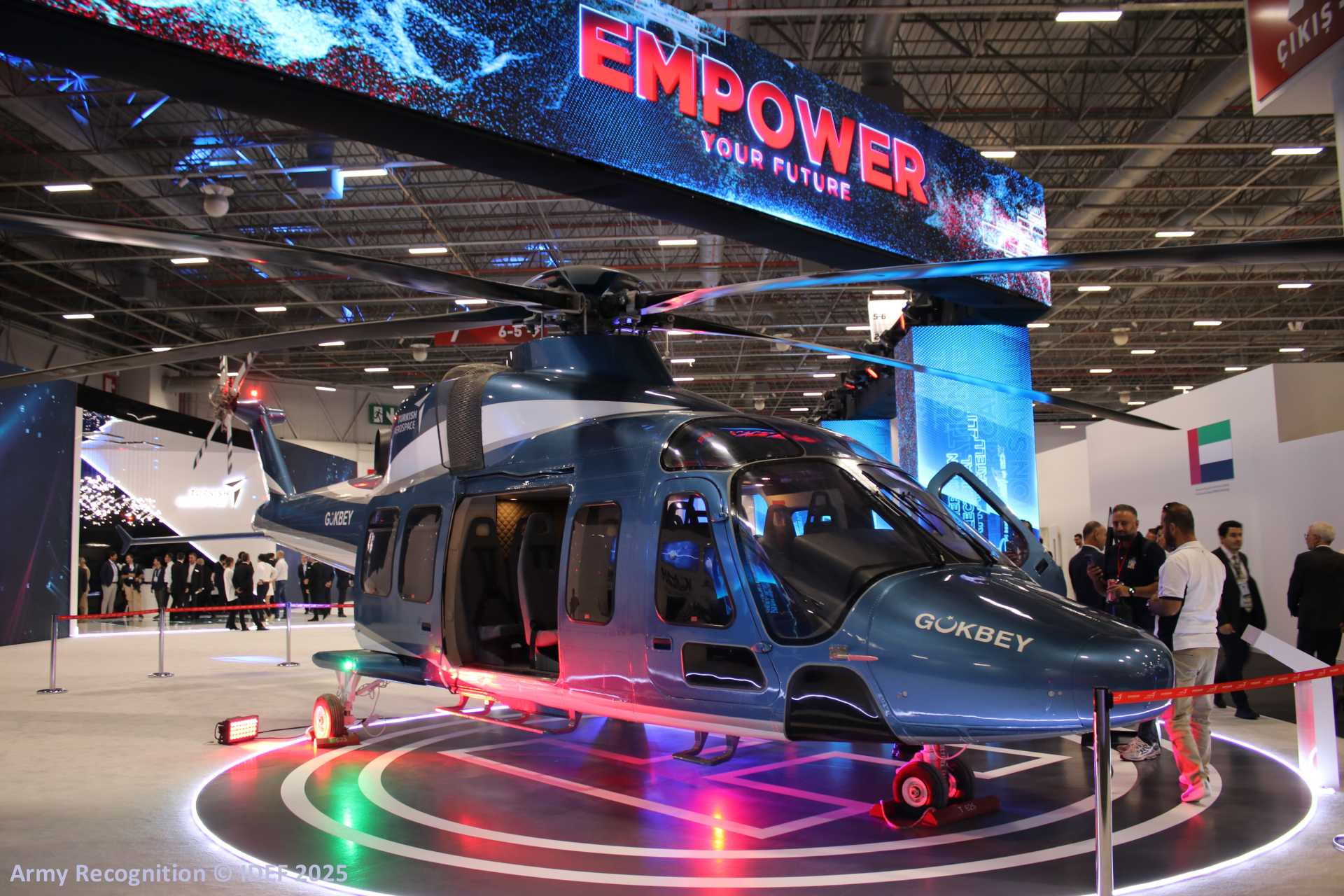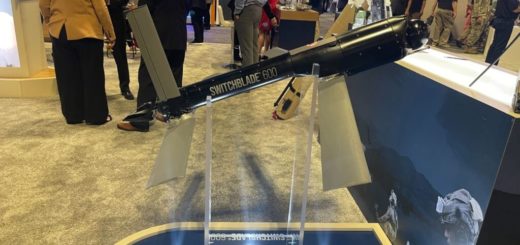IDEF 2025: Türkiye orders 57 new T625 Gökbey helicopters with national engines for defense and emergency support

{loadposition bannertop}
{loadposition sidebarpub}
On July 24, 2025, during the 17th International Defence Industry Fair (IDEF 2025), the Presidency of Defense Industries (SSB) and Turkish Aerospace Industries (TUSAŞ) signed a production contract for 57 additional T625 Gökbey general-purpose helicopters. The helicopters are to be equipped with TEI-TS1400 turboshaft engines developed by TUSAŞ Engine Industries (TEI), and deliveries are planned to begin in 2028. The contract was presented as part of Türkiye’s policy to reduce foreign dependency and increase national participation in aviation systems. TUSAŞ stated that it is continuing efforts to meet the country’s operational demands using domestically developed technologies. The agreement follows earlier deliveries to the Gendarmerie General Command and expands the Gökbey helicopter’s production scope for multiple Turkish security and civil institutions.Follow Army Recognition on Google News at this link
The T625 Gökbey project, initiated in 2010 and officially launched with the Turkish Light Class Utility Helicopter (TLUH) Program in 2013, was created to provide Türkiye with a versatile six-ton class helicopter capable of fulfilling both military and civilian missions. (Picture source: Army Recognition)
The Gökbey helicopter project was officially launched in 2013 under the Turkish Light Class Utility Helicopter Program following preliminary design work that began in 2010. Developed as a six-ton class multi-role platform, it was designed to meet operational needs in diverse environmental conditions, including high altitudes, extreme temperatures, and night operations. The helicopter completed its maiden flight on September 6, 2018, with its first delivery to the Turkish Armed Forces taking place on October 29, 2024. Structural and system components were developed by domestic industry, including Alp Aviation for the landing gear and dynamic components, and the Spanish firm CESA for the hydraulic systems. Following flight testing with imported LHTEC CTS800-4A engines, integration of the domestic TEI-TS1400 began in 2023. Serial production using this powerplant is scheduled for full implementation in the new contract.
The TEI-TS1400 turboshaft engine, officially introduced on December 11, 2020, was developed under the Turboshaft Engine Development Project (TMGP), initiated on March 7, 2017. The project aimed to reduce reliance on imported propulsion systems and raise the domestic content of aviation platforms. Designed for rotary-wing applications including the T625 Gökbey and potentially the T129 ATAK, the TS1400 produces 1,400 shp at takeoff and reaches 1,660 shp for 30-second one-engine-out scenarios. It includes a Full Authority Digital Engine Control (FADEC) system, a service ceiling of 20,000 feet, and an output shaft speed of 23,000 rpm. Engine control software and hardware are certified to DO-178C and DO-254 DAL-A standards, respectively. TEI conducted over 600 test points during qualification, including cold weather validation in Kiruna, Sweden, at temperatures as low as -30°C, and performed 60 sorties over 60 hours of testing.
The T625 Gökbey helicopter has a maximum takeoff weight of 6,050 kg and can transport 12 passengers with a crew of two. It reaches a maximum speed of 306 km/h and has a range of 740 km with standard fuel or 948 km with auxiliary tanks. The helicopter remains airborne for more than 3.8 hours and up to 5+ hours when equipped with external fuel. Its service ceiling is 6,096 meters. The aircraft includes a 1.1 m³ cargo compartment and retractable landing gear for aerodynamic efficiency. The platform was certified for civil production with the issuance of Production Organisation Approval (POA) from the Turkish Directorate General of Civil Aviation on December 30, 2024, following several audits between 2021 and 2024. The certification supports commercial deployment in addition to government and military service.
Avionics and mission software for the Gökbey are provided by Aselsan. The helicopter features a digital glass cockpit with Aselsan’s Modular Avionics Touchscreen Environment (MATE), which includes two 8×20 inch integrated mission displays and two 8×10 inch touchscreen data entry panels. The cockpit allows single-pilot operation under both IFR and VFR, including night flights and flight in known icing conditions. Navigation, identification, electronic warfare (in military configurations), and mission management systems were designed to meet international civil aviation standards, including those of EASA. Aselsan has also developed performance-based navigation capabilities compliant with RNP 0.3 and integrated systems such as the Helicopter Terrain Awareness and Warning System (HTWAS). A total of 34 avionics subsystems developed by Aselsan are integrated into the helicopter.
As of mid-2025, 20 Gökbey helicopters are scheduled for delivery to Turkish forces by the end of 2026: 7 for the Land Forces, 4 for the Air Force, 3 for the Gendarmerie, 3 for the Coast Guard, and 3 for the General Directorate of Security. The Ministry of Health is also scheduled to receive 3 air ambulance variants. Within the new batch of 57 helicopters, six will be allocated to the Coast Guard. TUSAŞ aims to increase production to four helicopters per month. In addition to domestic use, the company plans to export up to 400 helicopters by 2026. The helicopter’s design emphasizes maintainability and operational readiness, supported by integrated logistics plans developed by TUSAŞ and its personnel. Structural and mechanical systems are designed to support long-term operations with reduced maintenance costs.
The T625 Gökbey completed its first overseas flight in May 2025 during the Teknofest event in Northern Cyprus. In February 2025, it completed cold-weather testing in Sweden with flight tests evaluating rotor, hydraulic, and engine performance in sub-zero conditions. The aircraft completed over 60 test flights under these conditions. The helicopter features a five-blade main rotor and four-blade tail rotor with elastomeric bearings to reduce vibration. The three-stage main gearbox is capable of running for 30 minutes after a lubrication loss. All design and certification processes are in line with Turkish and international standards. As a continuation of previous national aerospace efforts, including the T129 ATAK and the production of Leonardo AW139 fuselages, the Gökbey program reflects Türkiye’s intent to develop multiple classes of rotorcraft, including 10-ton utility and attack helicopters, under full national control.

{loadposition bannertop}
{loadposition sidebarpub}
On July 24, 2025, during the 17th International Defence Industry Fair (IDEF 2025), the Presidency of Defense Industries (SSB) and Turkish Aerospace Industries (TUSAŞ) signed a production contract for 57 additional T625 Gökbey general-purpose helicopters. The helicopters are to be equipped with TEI-TS1400 turboshaft engines developed by TUSAŞ Engine Industries (TEI), and deliveries are planned to begin in 2028. The contract was presented as part of Türkiye’s policy to reduce foreign dependency and increase national participation in aviation systems. TUSAŞ stated that it is continuing efforts to meet the country’s operational demands using domestically developed technologies. The agreement follows earlier deliveries to the Gendarmerie General Command and expands the Gökbey helicopter’s production scope for multiple Turkish security and civil institutions.
Follow Army Recognition on Google News at this link
The T625 Gökbey project, initiated in 2010 and officially launched with the Turkish Light Class Utility Helicopter (TLUH) Program in 2013, was created to provide Türkiye with a versatile six-ton class helicopter capable of fulfilling both military and civilian missions. (Picture source: Army Recognition)
The Gökbey helicopter project was officially launched in 2013 under the Turkish Light Class Utility Helicopter Program following preliminary design work that began in 2010. Developed as a six-ton class multi-role platform, it was designed to meet operational needs in diverse environmental conditions, including high altitudes, extreme temperatures, and night operations. The helicopter completed its maiden flight on September 6, 2018, with its first delivery to the Turkish Armed Forces taking place on October 29, 2024. Structural and system components were developed by domestic industry, including Alp Aviation for the landing gear and dynamic components, and the Spanish firm CESA for the hydraulic systems. Following flight testing with imported LHTEC CTS800-4A engines, integration of the domestic TEI-TS1400 began in 2023. Serial production using this powerplant is scheduled for full implementation in the new contract.
The TEI-TS1400 turboshaft engine, officially introduced on December 11, 2020, was developed under the Turboshaft Engine Development Project (TMGP), initiated on March 7, 2017. The project aimed to reduce reliance on imported propulsion systems and raise the domestic content of aviation platforms. Designed for rotary-wing applications including the T625 Gökbey and potentially the T129 ATAK, the TS1400 produces 1,400 shp at takeoff and reaches 1,660 shp for 30-second one-engine-out scenarios. It includes a Full Authority Digital Engine Control (FADEC) system, a service ceiling of 20,000 feet, and an output shaft speed of 23,000 rpm. Engine control software and hardware are certified to DO-178C and DO-254 DAL-A standards, respectively. TEI conducted over 600 test points during qualification, including cold weather validation in Kiruna, Sweden, at temperatures as low as -30°C, and performed 60 sorties over 60 hours of testing.
The T625 Gökbey helicopter has a maximum takeoff weight of 6,050 kg and can transport 12 passengers with a crew of two. It reaches a maximum speed of 306 km/h and has a range of 740 km with standard fuel or 948 km with auxiliary tanks. The helicopter remains airborne for more than 3.8 hours and up to 5+ hours when equipped with external fuel. Its service ceiling is 6,096 meters. The aircraft includes a 1.1 m³ cargo compartment and retractable landing gear for aerodynamic efficiency. The platform was certified for civil production with the issuance of Production Organisation Approval (POA) from the Turkish Directorate General of Civil Aviation on December 30, 2024, following several audits between 2021 and 2024. The certification supports commercial deployment in addition to government and military service.
Avionics and mission software for the Gökbey are provided by Aselsan. The helicopter features a digital glass cockpit with Aselsan’s Modular Avionics Touchscreen Environment (MATE), which includes two 8×20 inch integrated mission displays and two 8×10 inch touchscreen data entry panels. The cockpit allows single-pilot operation under both IFR and VFR, including night flights and flight in known icing conditions. Navigation, identification, electronic warfare (in military configurations), and mission management systems were designed to meet international civil aviation standards, including those of EASA. Aselsan has also developed performance-based navigation capabilities compliant with RNP 0.3 and integrated systems such as the Helicopter Terrain Awareness and Warning System (HTWAS). A total of 34 avionics subsystems developed by Aselsan are integrated into the helicopter.
As of mid-2025, 20 Gökbey helicopters are scheduled for delivery to Turkish forces by the end of 2026: 7 for the Land Forces, 4 for the Air Force, 3 for the Gendarmerie, 3 for the Coast Guard, and 3 for the General Directorate of Security. The Ministry of Health is also scheduled to receive 3 air ambulance variants. Within the new batch of 57 helicopters, six will be allocated to the Coast Guard. TUSAŞ aims to increase production to four helicopters per month. In addition to domestic use, the company plans to export up to 400 helicopters by 2026. The helicopter’s design emphasizes maintainability and operational readiness, supported by integrated logistics plans developed by TUSAŞ and its personnel. Structural and mechanical systems are designed to support long-term operations with reduced maintenance costs.
The T625 Gökbey completed its first overseas flight in May 2025 during the Teknofest event in Northern Cyprus. In February 2025, it completed cold-weather testing in Sweden with flight tests evaluating rotor, hydraulic, and engine performance in sub-zero conditions. The aircraft completed over 60 test flights under these conditions. The helicopter features a five-blade main rotor and four-blade tail rotor with elastomeric bearings to reduce vibration. The three-stage main gearbox is capable of running for 30 minutes after a lubrication loss. All design and certification processes are in line with Turkish and international standards. As a continuation of previous national aerospace efforts, including the T129 ATAK and the production of Leonardo AW139 fuselages, the Gökbey program reflects Türkiye’s intent to develop multiple classes of rotorcraft, including 10-ton utility and attack helicopters, under full national control.






